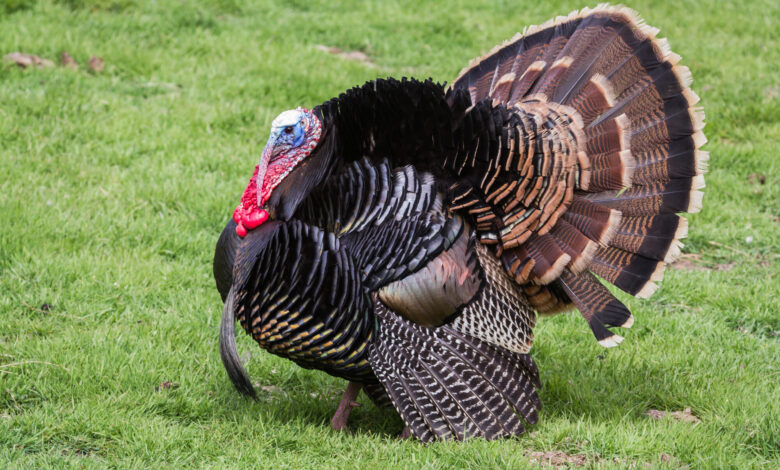The Ultimate Guide on How to Hunt Turkeys

Turkey season is here! And if you’re a turkey fanatic, you’re itching to get outside and move around like the bird you’re hunting.
Game on! If you want to learn how to hunt turkeys, read on. You’ll need to know the ins and outs of turkey hunting before you get started.
Keep reading to learn all about turkey hunting, where to hunt turkeys, how to make a turkey call, and how to give yourself the best turkey hunting experience.
Get the Right Gear
Ensuring you have the right hunting supplies and gear is crucial for a successful turkey hunt. Selecting the appropriate equipment is paramount whether you’re using a shotgun or bow. Shotguns, known for their effectiveness at close range, are popular.
Ensure you have the correct ammunition, such as turkey loads, designed specifically for these birds. If you’re interested in exploring the latest advancements in hunting equipment, it’s worth taking a moment to check this link about a hunting flashlight, which can be invaluable for navigating through the woods during those early morning or late evening hours when turkeys are most active.
Additionally, having the right turkey calls in your arsenal is essential. Different calls produce various turkey sounds, and mastering them can significantly improve your chances of luring in your quarry. From box calls and slate calls to diaphragm calls, these tools can be game-changers in your hunt. Along with your calls, invest in quality camouflage clothing that matches your hunting environment and season.
Learn Turkey Behavior
Understanding turkey behavior is a critical aspect of turkey hunting success. Turkeys have a wide range of vocalizations, each serving a specific purpose. Gobbling is the most famous, primarily performed by male turkeys (toms) to attract hens. Hens produce clucks, purrs, and yelps, which are essential for communication and social interaction.
Learning these calls and when to use them can be the difference between a successful hunt and a frustrating one. You can find instructional videos and audio recordings online to help you practice and mimic these calls effectively.
Knowing the difference between male and female turkey behavior is also crucial. Toms are more vocal and responsive to calls, especially during the breeding season. Hens, on the other hand, can be more cautious and stealthy. Understanding the social dynamics of turkey flocks, including the pecking order and interactions between birds, can help you strategize your approach during the hunt.
Plan Your Hunt
Planning your turkey hunt involves carefully considering location, timing, and tactics. To choose the right location, identify roosting sites where turkeys spend their nights.
Set up your hunting spot near these areas, as turkeys often travel from their roosts to feeding grounds in the early morning. Understanding their travel routes and patterns is essential. Utilize your scouting information to pick an ideal spot with good visibility and a natural cover for concealment.
Timing is crucial in turkey hunting; early morning hours are typically the most productive. Turkeys are most active during dawn and are most responsive to calls. Arrive at your hunting spot well before sunrise to get set up quietly.
Begin your calling sequence softly and gradually increase the volume and frequency to make it sound like a real turkey. Be patient and avoid abrupt movements, as turkeys have exceptional eyesight and can easily detect the slightest motion.
Safety First
Safety is paramount in hunting, and turkey hunting is no exception. To ensure a safe hunt, always follow basic firearm safety rules. Before you take a shot, be 100% certain of your target and what lies beyond it. This means positively identifying the turkey as a legal target and ensuring no other hunters, structures, or people are in the line of fire.
Communication with other hunters in the area is crucial, especially in public hunting lands. Ensure everyone knows your location and stay aware of theirs to prevent accidents.
Wearing “hunter orange” safety gear is essential in many hunting areas, as it helps you remain visible to other hunters. Even if it’s not required, it’s a good practice, especially when moving to and from your hunting location.
When using decoys, be cautious about where you place them to avoid confusion with other hunters. Always keep your firearm or bow pointed in a safe direction, with the safety engaged until you’re ready to shoot. Safety should be a constant priority throughout your turkey hunting experience.
Practice Shooting
Due to the small size of a turkey’s vital area, placing your shot well when shooting this bird is important. Practice shooting your shotgun or bow often to better hit your target, especially at different distances you might find on a hunt.
Spend time at a gun range or controlled setting to act out hunting situations. This practice lets you know your gear and gives you more confidence as a shooter.
If you want to kill a turkey quickly and humanely, the best places to aim are the head and neck. Turkeys have small vital parts, so it’s important to be careful. Practice your aim on targets that stay still and, if you can, on ones that move. This will help you prepare for real shooting situations.
You can also improve at shooting by sitting, kneeling, or using shot sticks differently. Also, know how far your gun or bow can shoot because turkeys are often shot from close range, usually within 20 to 40 yards.
Follow Local Regulations
Adhering to local hunting regulations is not just a legal requirement but also essential for conservation and ethical hunting. Regulations vary from region to region and may change from season to season.
Before heading out on your turkey hunting adventure, take the time to thoroughly review the most recent regulations provided by your local wildlife agency or department. These regulations will detail important information such as hunting seasons, bag limits (the number of turkeys you can legally harvest), legal hunting methods, and safety requirements.
Learn How to Hunt Turkeys Today!
In conclusion, hunting turkeys can be a challenging and rewarding experience for any outdoor enthusiast. You’ll be well-equipped for a successful hunt with the tips and techniques outlined in this guide.
So grab your gear, apply these strategies on how to hunt turkeys, and prepare to bring home that elusive gobbler. Happy hunting, and good luck!
Don’t forget to share your hunting stories and strategies with us in the comments below. Happy hunting!
We hope you enjoyed reading this article. If you found it helpful, be sure to check out our blog for more informative resources.
You Might Also Like:



